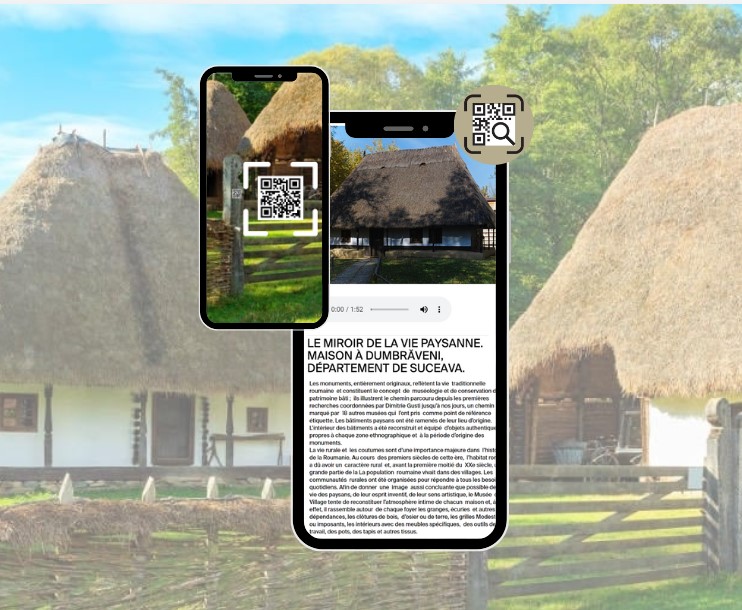Interactive tour
Enhance
Experience With
Interactive Tour
Experience With Interactive Tour
The Interactive Tour is designed to provide an easy-to-use interface for visitors to get information about what they see while visiting the Museum.
By highlighting all the important elements of a specific work of art, the visitor can receive all the elements he needs to keep interest on the museum and its history and be more engaged about the importance of keeping these treasures undamaged.
This type of solution allows every visitor to understand the content and its history by a language change possibility. This solution is a part of a better inclusivity policy by providing visual or audio guides, making the museum experience more accessible.

How To Use Interactive Tour? Interactive Tour
The Interactive Tour provides content such as multilingual texts, sounds or even videos. It is linked to each object exhibited in the museum and is associated with a specific generated QR code.
During the visit, the visitor simply has to scan the QR code with his phone’s camera to see the content automatically delivered on a web page.
This solution must be managed by the E-CMS in order to modify the displayed content.

Key Features of Interactive Tour:
Enhanced Visitors Engagement
Gamification: Incorporating game-like elements can make learning more enjoyable and encourage visitors to explore more of the museum.
Educational Enrichment
Visualization: It can bring to life historical events, ancient cultures, or extinct species, helping visitor to visualize and understand complex subjects.
Personalized Experience
Customized Tours: Visitors can choose Interactive-guided tours on their interests, providing a tailored experience that can adapt to their preferences and knowledge levels.
Multilingual Tours: Interactive tour can offer information in multiple languages, making exhibits accessible to a wider audience.
Accessibility & Inclusivity
Support for Disabilities: Interactive tour can assist visitors with disabilities by providing visual or audio guides, making the museum experience more accessible.
Tactile Feedback: For visitors who are visually impaired, the interactive tour can be combined with haptic feedback devices to offer a more inclusive experience.
Interactive Learning
Augmented Reconstructions: Augmented Reconstructions: Interactive tour can reconstruct ruins or damaged artifacts, showing visitors how they originally looked and functioned
3D models: Interactive 3D models can be manipulated by visitors to explore artifacts from different angles and understand their structure and usage.
Increase Engagement Outside
Real-time Updates: Can easily update Interactive tour content, ensuring that the information provided is current and relevant without altering physical displays.
Events Integration: Interactive tour can be used to enhance temporary exhibits or events, providing additional layers of interaction and information that can be changed or removed as needed.
Data collection & Analysis
Visitor Insights: Interactive tour can track how visitors interact with exhibits, providing valuable data on visitor preferences and behavior that can be used to improve future exhibits and experiences.
Feedback Mechanisms: Integrated feedback systems can capture visitor opinions and suggestions, helping museums to continually improve their offerings.
Dynamic and Up-to-Date Content
Extended Reality: Interactive tour can offer experiences that extend beyond the museum walls, such as AR- enabled mobile apps that allow visitors to explore related content at home or in other locations.
Marketing and Outreach: Museums can use Interactive tour for promotional activities, engaging potential visitors and providing a preview of what they can experience inside.

